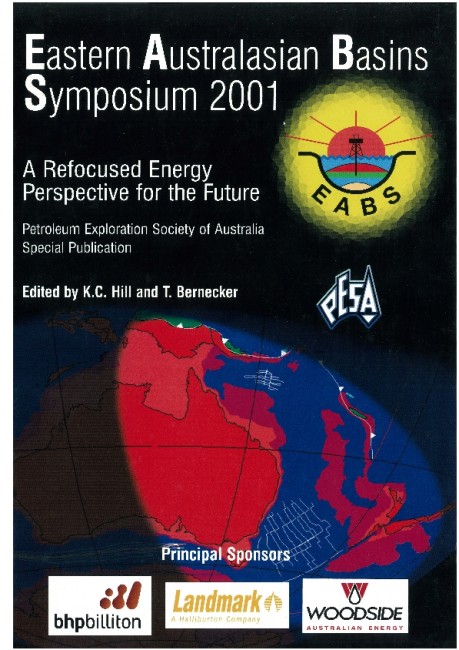Publication Name: Eastern Australian Basins Symposium 2001
Authors: S. Zhao and R.D. M?ller
Date Published: November 2001
Number of Pages: 33
Reference Type: Magazine Article
Abstract:
Flexural analysis of geological structures in eastern Australia, based on gravity and topographic data, suggests that the flexural rigidity of the fold belts is about 3.6 - 4.4 x 1022 Nm. This corresponds to an effective elastic thickness of 16 - 17 km, which is nearly one order of magnitude less than that of cratons. The variation in the flexural rigidity reflects the difference in the mechanical strength of these geological structures.To investigate the effect of the lateral heterogeneities in the lithosphere on local and regional stress fields, we construct a three dimensional fin ite element model (FEM) for the Australian continent with a spatial resolution of about 10 x 10 x 50 km, in which the major geological blocks/elements were included and the ridge push and plate
boundary forces were examined. The 30 FEM model provides a good fit to the in situ stress orientations in the Bowen Basin. In the Sydney Basin, this model can account for the in situ stress orientations within ?33?. Our
results suggest that the overall stress pattern may be controlled by ridge push and plate boundary forces, but the differences in mechanical strength of the geological structures, associated with lateral heterogeneities in the lithosphere, significantly perturb the maximum horizontal stress orientations as well as the associated stress patterns. In addition, three zones of stress concentration are predicted, which are generally consistent with the pattern of seismicity in the region. The technique described here could aid stress-dependent reservoir simulation
or the prediction of fault seal fai lure. In addition, it may also prove useful for preventing roof-collapse in coal mines, since orienting the longwall correctly in the local/regional stress fields is critical for strata control during development and longwall extraction.


